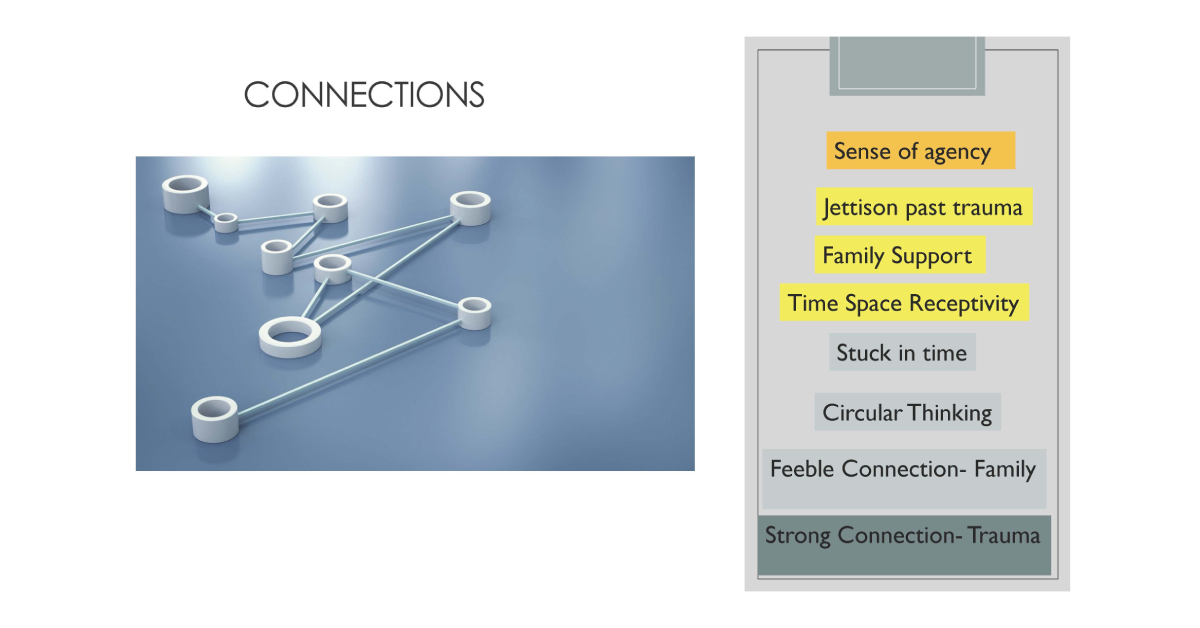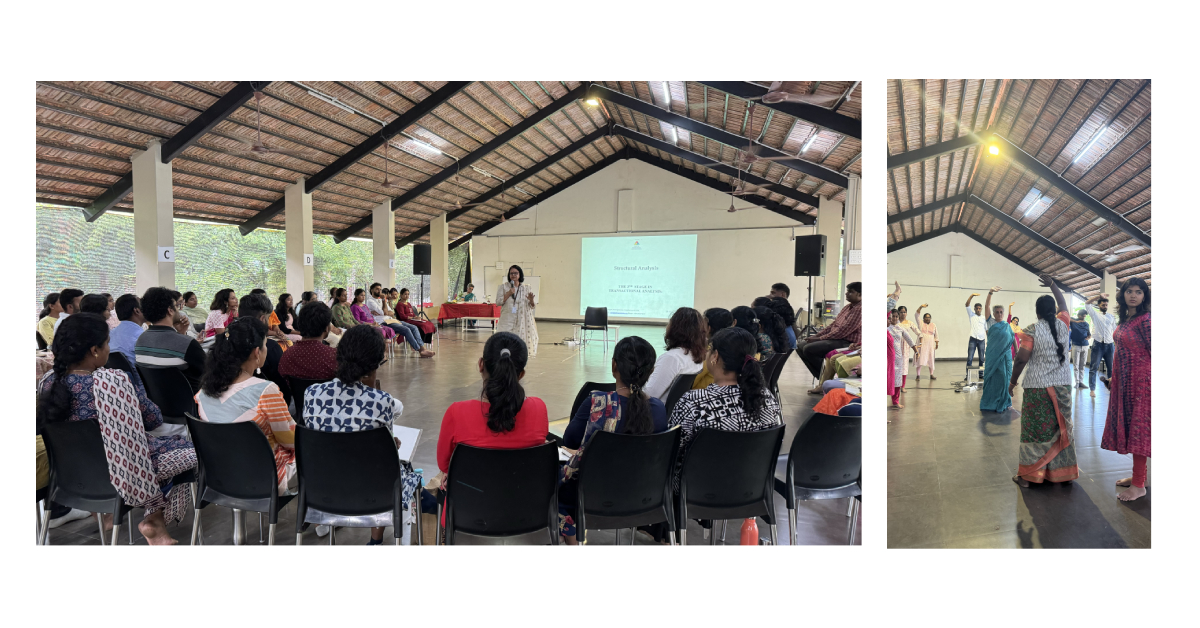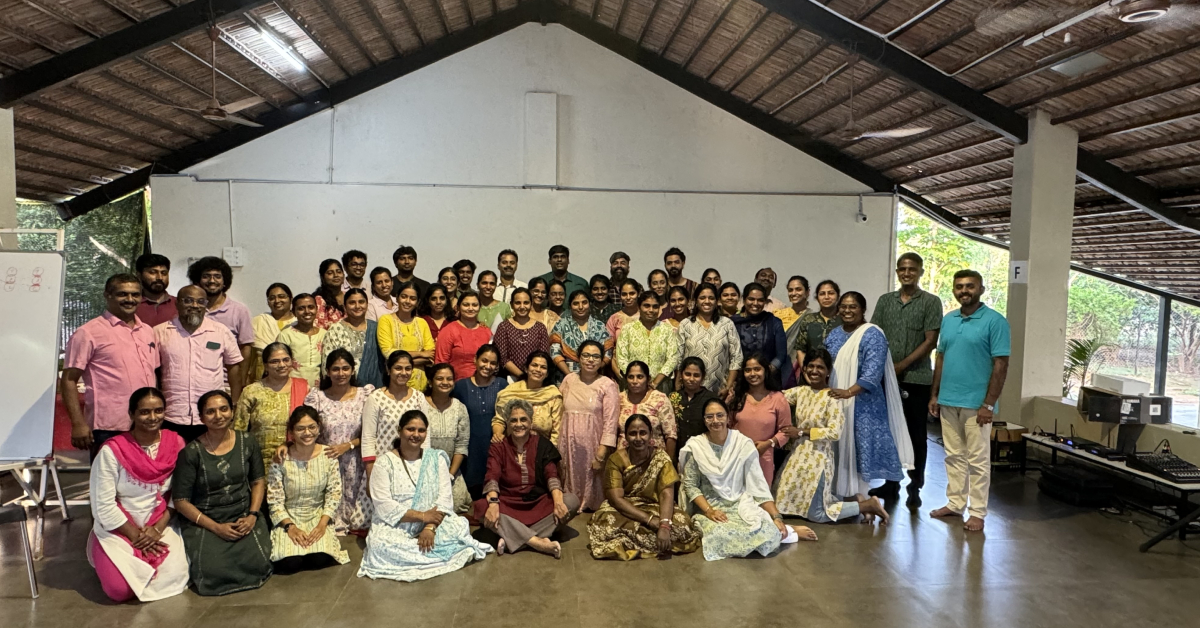Boundaries: Connections & Connecting. Contd. 3
Dear Readers, Welcome to SC Musings, Blog 12,
We traversed multiple landscapes in Blog 11, the Guru Puja in Fernhill Gurukula, my triangular journey in South India, culminating in a cousin's funeral. Returning to Coimbatore, packed with diverse experiences, routines helped me ground & connect to home and work. Routines are one of the ways of Connecting our memory with space and time, which we will explore in Blog 13.
Coming back to this Blog 12, we are going to delve deeper and wider into Connections with others. This will give us a perspective of how our Connections impact our relationships, with the primary motive of making intentful, mindful Connections. Thus, our sense of agency is enhanced, which in turn empowers us. Agency, intent and mindfulness relieve stress, making us live in the moment, alive and awake to self, others and the environment.
Let’s go to the very beginning, to a just born baby, to comprehend Connections and Connecting. Coming out of the secure womb into a strange space, touch is the first connection for the baby, that is, the touch of persons and various materials used in birthing; these bring the little one in contact with others and the environment. A baby’s response, the connection with the environment, is usually with the first cry. The internal connection with the mother through the umbilical cord is severed after birth, leading to an external connection, when the mother holds, nurses and takes care of the baby. Connections described till now are to be expected in the normal course of delivery. Extraordinary situations may bring forth different experiences for the infant, which are not within the scope of this blog.
These early Connections form the basis, the foundation for life long Connections, which usually become networks, as the infant grows into adulthood. One way of viewing life and living from birth to death, is as a network of Connections. Figure 12.1 depicts networks which are global and hazy, undifferentiated at birth on the left, and become clear images on the right of picture, as an individual matures.

Connections after birth, and in early childhood have a significant impact on the psycho-social development of the baby- the personality of the individual is decided and shaped by these Connections. Connections in turn, determine relationships the individual has with self, others and environment.
Moving from the origin, we can identify and describe the various aspects of Connections in human relationships like strength, space, time and quality. Also, there are possibilities for ovelaps between these aspects, as they are not discrete entitites.
Strength ranges from bondage to bonding, from distance to no connection; in between categories also exist. Distance refers to the space in relationships- from physical to psycho- social space; a feeling of oneness may transport to a trans-personal space, where ego boundaries are transcended. Influence of time on connections is quite obvious- a few relationships mature and evolve with time, while a few fade, depending on the quality of Connections. Quality of Connections may be viewed from each of the layers and dimensions of the NG Holistic Model of a human being, namely physical, psychological, cognitive, behavioral, social and spiritual.

From an overall understanding , we are moving to case studies to understand the finer nuances of Connections.
Raju*, in his forties, a successful Executive for 2 plus decades was on the path of heading his company, an MNC. Entry of a senior Executive, with whom Raju shared his early childhood difficulties and escapades provided companionship opportunity to Raju. However, with time the dynamics between them shifted, and Raju experienced the senior undermining his position and functions. This sent him on a downward spiral, with loss of self-esteem and confidence, ending in deep depression. Considering himself as a total failure, Raju could not eat, sleep and think- he appeared and functioned like a zombie- lost and clueless.
Brought to Nitya Gurukula by a family member, Raju poured out his woes. His family had a history of failure, professionally, economically and personally, which hit Raju when he was about 9. They went from a high-flying life style to ground level or below – and Raju took to the streets with friends, getting into anti-social activities, with his education taking a down turn. Father’s exasperated reaction to his apathy in studies, brought a sudden shift in early adulthood, and Raju began focusing on his studies; slowly he began performing extremely well and landed in a prominent industry, and worked his way up.
Encounters with the senior drove Raju to helplessness and hopelessness. Suicidal, Raju wanted to quit his job and do nothing. I witnessed Raju’s plight and experienced his deep fears and sense of loss as his counsellor. His family member, whom he insisted should remain with him in the counselling room was also empathetic and supportive. Raju was scheduled for a trip abroad for his organisation, and was sure he wanted to resign. “ I don’t know and remember anything- what is the point?” he lamented. He wanted to understand why and what was happening to him.
Listening to and seeing the deep trauma embedded in and oozing out of Raju’s psyche, perhaps transmitted through generations, I accepted his outpourings. Gently introducing the NG Holistic Model of a Human Being, I explained that he was burdened by an emotional and cognitive overload, resulting in circular thinking, which was seeping into his body.
Manifesting in his behaviors and communication, the overload sucked his energy and immoblilised him.
Interestingly, I learnt Raju’s mother was Christian, and father a Hindu. As a result, Raju was bi-religious*1, Jesus and Murugan were both his favourite Gods. I offered a tip that he could recite their names when sleep evaded. I suggested he postpone offering his resignation, meet his boss and request a sick leave for a fortnight. Reluctantly Raj agreed, and was sure he was not in a condition to travel abroad.
Awestruck the next day when Raju walked in, I eagerly asked what happened. ‘ I don’t know- and went to my organisation today’, stated Raju. Gone was the lost and hopeless demeanor; Raju strolled into the room smiling, upright and smartly dressed, accompanied by his family member- his skin tone had changed from a sick pallor to brightness and vibrance. Informing me of his decision to go abroad, Raju voiced doubts whether his depression would return, and hit him during his trip. Assuring him of staying in contact through mobile, I suggested he practice Taichi and breathing exercises. Readily agreeing, Raju eagerly learnt Taichi and breathing excercises and I was convinced of his commitment to develop and grow beyond his trauma.
Let’s now apply the factors of Connections like strength, space, time and quality to view Raju’s transformation. When entering Nitya Gurukula for the 1st time, Raju’s main and stong connection was with his trauma; he had a feeble connection with a few family members; he was caught in his psychological space and was not conscious of anything else; stuck in time, he was enmeshed in his thoughts and deep anxiety- circular thinking was pounding within.
The space and receptivity offered in counselling, along with his family support, seem to have provided a vent for Raju to download and jettison part of his trauma. His intention to ground and root in his life and profession was also triggered, which led to regaining his sense of agency. Raju messaged me from abroad, informing that he was mostly okay, but had micro episodes of being ‘overwhelmed’, and wanted help in handling them. I invited him to turn his focus on his breathing and posture, and begin chanting within. Raju was grateful and we decided to meet after his return to India.

I am now interested in identifying the factors which contributed to the overnight transformation of Raju. Subtle and invisible Connections in the counseling process, with the holding provided by his family member, anchored in Raju and triggered the transformations. Abstraction and conceptualisation of Connections which depress and elevate individuals will definitely provide tools for effective transformations in People Work.
Moving from the counselling to the educational arena, NG conducted a 2 day introductory course in Transactional Analysis, which we term as TA 101 With a Difference, in a local school.

The founder of the school which adapted the montessori approach in education, was a participant along with 55 faculty members. As the TA and Taichi teachings by me and members of the NG team unfolded, the participants became energised and comfortable in using the TA language. A noticeable shift from confusion and doubt, to exploration and reflection over 2 days, deepened our connection with participants, with TA and the school environment.

Dear Readers, I have taken you to depths of Connections, and hope you are not submerged in abstraction. Pressing the pause button here, I assure you we will explore more about Connections and Relationships in our next Blog.

* Name changed to protect identity
*1: coined by me